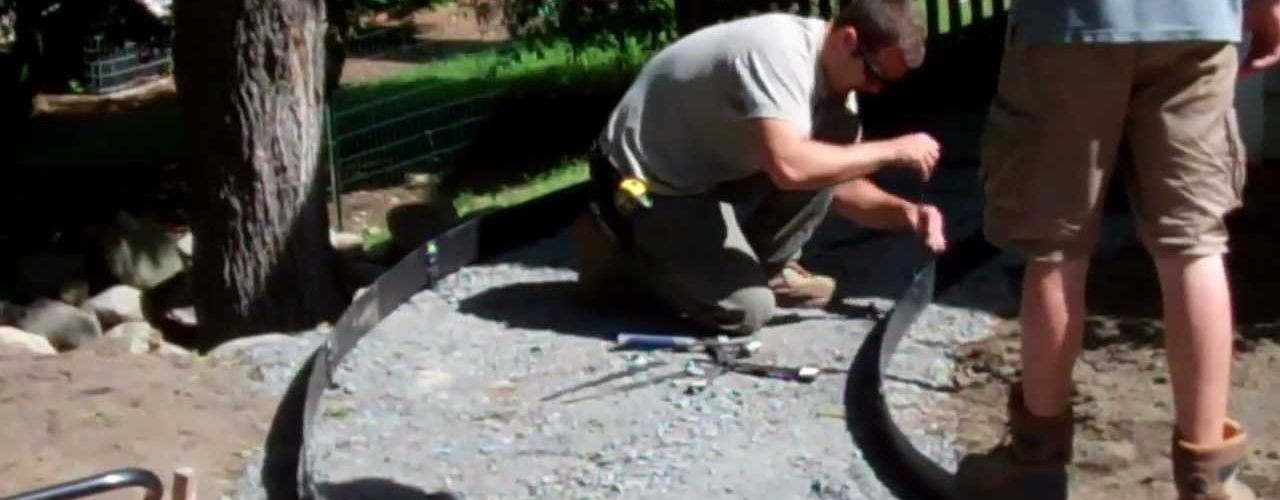A walkway provides a convenient path from one point in a yard to another, offering a strip of stable surface on which to walk. Walkways keep trips to the mailbox free of grassy feet, prevent high-heeled shoes from sinking, and offer a great opportunity to accent an otherwise plain lawn. There are many materials that can be used to make walkways which require different construction techniques.
The first and possibly the easiest method is to use pre-cast walkway stones. These are readily available at almost every lawn and garden store and are relatively inexpensive. These stones can be placed directly on grass; after the course of a few months, they will sink in. Alternatively, the sod can be removed prior to installation and the empty hole filled with compacted sand for a longer-lasting path. Paving stones come in all shapes and colors and are suitable for just about any home or business. They can be laid so that each stone is an island in the grass or so that they form a continuous path. Contemporary shapes are available to make them look like natural stone, a perfect addition to a split-pine cabin or a vine-covered residence.
The second common walkway material is poured concrete. Although this type of walkway can look plain, it will blend right in with modern suburbia. Poured concrete paths are best done commercially, although it is possible to do it yourself with the right equipment. They involve first digging a trench where the walkway is to be. Gravel and layers of sand are packed using a vibratory plate compactor, forming the bed on top of which the concrete will rest. Forms are then installed in the trench to contain the concrete and any steel reinforcement rods. The concrete is then poured, leveled, and textured. As bland as concrete may seem, this path does not have to be the standard white concrete often seen used in public sidewalks and walkways. Colored and textured concretes exist which can add to the decor of any home or business. Patterns for texturing concrete can even be custom made – for a price, of course.
The third and most difficult walkway to construct is made with brick pavers. Pavers are small colored bricks which come in many shapes and colors. These bricks are extremely versatile and are often arranged in artful patterns including swirls, boxes, zig-zags and outlines. Though time-consuming and tedious to construct, it is very possible to do without commercial help. To lay a paver pathway, A short trench must be dug where the path is to run. This trench is filled halfway with coarse gravel, then fine sand. This sand is then compacted to form the bed upon which the paving bricks will rest. The bricks are then arranged in the desired pattern on the sand. A diamond-blade masonry saw is used to cut the bricks to fit into small spaces where odd pieces are needed. Fine jointing sand is then brushed into all the spaces between the bricks to lock them in place. As a further option, the surface may be sealed to prevent the effects of weathering.
An artfully constructed walkway can add significantly to the external appearance of any building. Imagine a log cabin with a plain concrete path, then one with flagstones set into sand. It is easy to see that the choice of walkway has a very important influence on the decor of a building. The best type of path will be determined by the method of construction and assets available.



